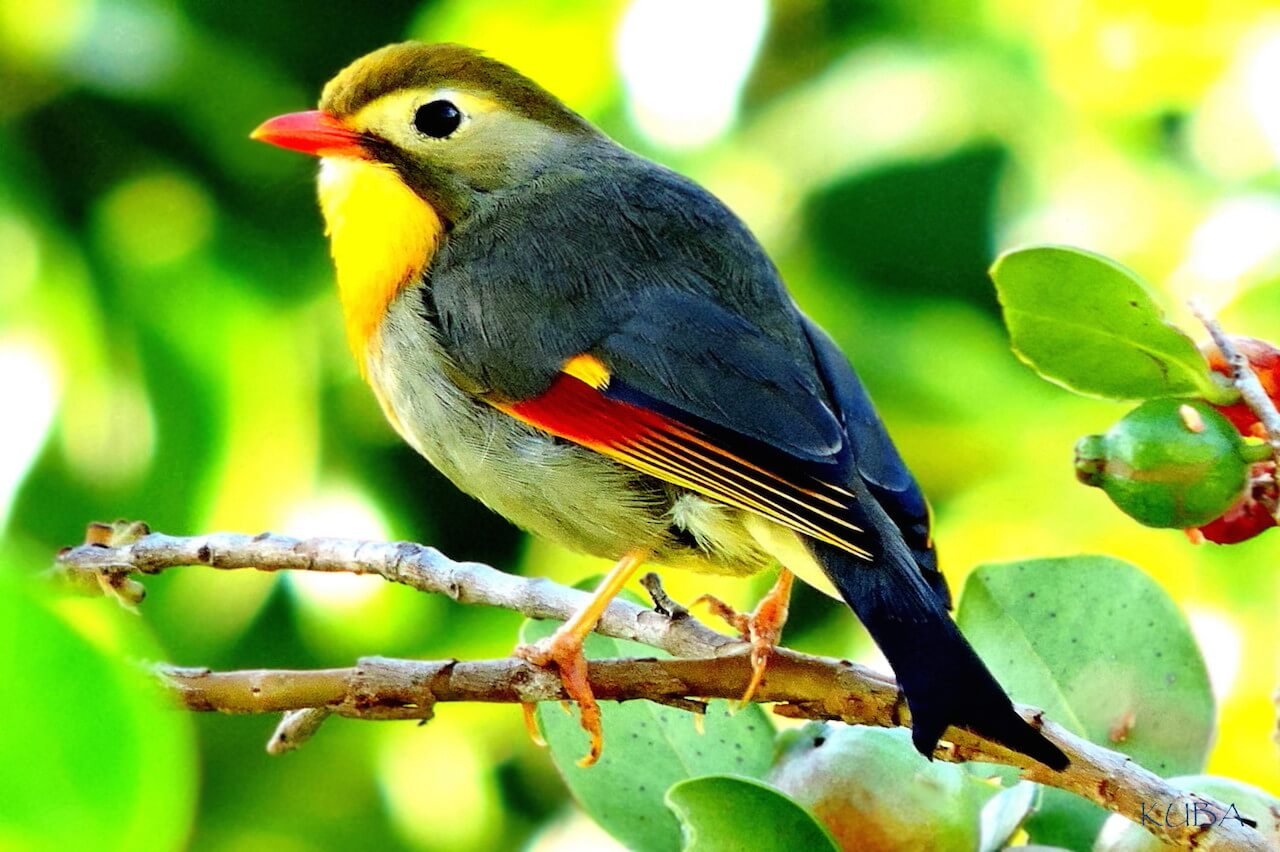
Red-billed Leiothrix
Diet: Red-billed Leiothrix
Red-billed Leiothrix eat mostly fruits and insects, but have been known to nibble on seeds
Basic Diet:
Protein Options:
Live crushed mealworms, crickets or grasshoppers
Dried crushed mealworms,. crickets or grasshoppers
Mashed hard boiled or scrambled egg (chicken or duck)
Fruit Options (you can purchase the fruit in the form of organic baby food)
Banana
Mango
Cherries
Strawberry
Papaya
Apple
Guava
Strawberry Guava
Lilikoi (Passion Fruit)
Blueberry
Supplemental Options
Egg Food Bird Supplement (Vitakraft or Quiko)
Abba Green
Mazuri Better Bug Gut Loading Diet
Dried crickets or mealworms (crushed)
Formula Options (using sparingly as they are mainly fruit and insect eaters):
Kaytee Exact Baby bird Formula
Harrisons Formula
Hagen Tropican Baby Bird Food
How to Feed:
Crop feeding: Mix puree fruit and baby bird formula
Mix mashed fruit and baby bird formula
20% fruit, 20% supplemental protein options, 60% baby bird formula with water or unflavored Pedialyte
Offer as much food until they stop gaping. and the crop appears full. Start to feed once the crop empties
Other Feeding Options:
Mix 30% mashed fruit 20 % supplemental mix or crushed protein and 50% bird formula. Add water or unflavored Pedialyte (if sickly) to create a chunky but moist consistency.
Give the mix on the end of a coffee stirrer or skewer. The baby should eat as much as it can off of it. Give time for the baby to swallow the food entirely before offering more.
Feed every 1-2 hours from sunrise to 2 hours after sunset
How much and how often to feed:
Crop Feeding
Hatchlings and young nestlings eat about . 5-1ml of formula every 30 minutes
Nestling will eat about 1 - 2ml of formula every 45 minutes to 1 hour
Fledglings: 1.5-2 ml of formula and pureed fruit every 1.5- 2 hours
Feed from sunrise to sunset. If a bird is not doing well, continue feeding 2 hours after sunset.
Other feeding methods
Hatchlings and young nestlings: feed as much as they can until they stop gaping every 30 minutes
Nestling: feed as much as they can until they stop gaping every 45 minutes
Fledglings: feed as much as they can until they stop gaping every 1-1.5 hours
Feed from sunrise to sunset. If a bird is not doing well, continue feeding 2 hours after sunset.
How to Ween:
Nestlings will start to explore and naturally peck around the cage at different things.
1. Scatter small flies or other live protein sources around the cage to encourage exploration in food.
2. Put soft (papaya or mango) fruit inside the cage, change the fruit every 6 -8 hours.
Fruit Options
Banana
Papaya
Strawberries
Blueberries
Apples
Mango
3. Start to give half of a overripe papaya in the cage to encourage eating on its own.
Continue hand feeding every 2 hours throughout the weaning process
Gradually decrease the amount of formula given daily as they start to peck at the other food items around the cage.
It is important not to rush the weaning process. Some birds take longer than others to wean.
Helpful Tips:
Fledglings can be offered an insectivore diet (Mazuri Better Bug Gut Loading Diet) to add to their diet and as they wean off of formula.
Rotate the fruits and type of protein to provide a variety of nutrients.
The adult diet should be equal parts fruit and protein
Food should be given mostly mashed together to create a moist watery but substantial consistency until the bird eats on it’s own entirely.
The leiothrix is often found in dense jungle vegetation.
One of the most common places to spot leiothrix is Manoa Valley.
Red-Billed Leiothrix
Chinese hill robin
Source: “Red-Billed Leiothrix Behavior.” Whatbird.com, Mitch Waite Group, 2013, https://identify.whatbird.com/obj/1137/behavior/Red-billed_Leiothrix.aspx.
-
Red-billed Leiothrix: Crown, nape and back are olive-green; lores, eye ring and supraloral stripe are cream to dull yellow. Bright yellow-orange throat, yellow chin; pale yellow underparts; olive-brown wings have yellow-orange patch; bright red bill.
Females: slightly smaller than male, more green-olive crown, grayer ear coverts, smaller and duller red wing patches.
Juvenile similar to female, has paler bill, crown is same color as mantle, olive-gray underparts, white center, dull red and yellow wing patches, yellow throat and rust breast band. (Red-Billed, 2013).
-
Red-billed Leiothrix: Introduced to Kauai in 1918, to other islands in the 1920s-1930s.
Found in native and exotic forests from ocean level to mountain tops. Native to Southeast Asia, Himalayan region of India, and southern China.
-
“Egg Color: Pale blue marked with red-brown.
Number of Eggs: 1 - 4
Incubation Days: 14
Egg Incubator: Female
Nest Location: Nest is 2 to 10 feet above ground in dense vegetation.
Nest Material: Leaves, dried grasses, sometimes animal hair.”
(Red-Billed, 2013.)


